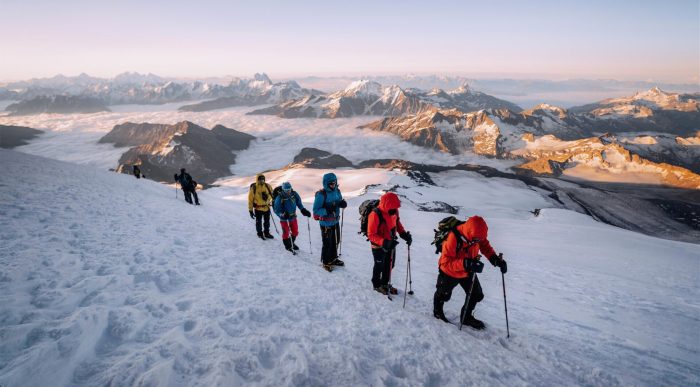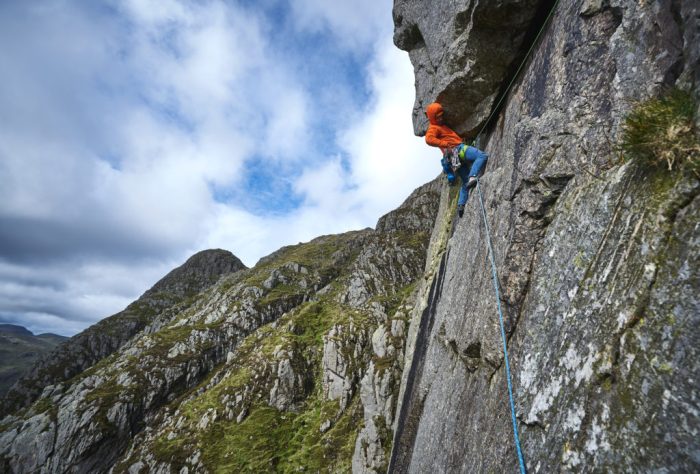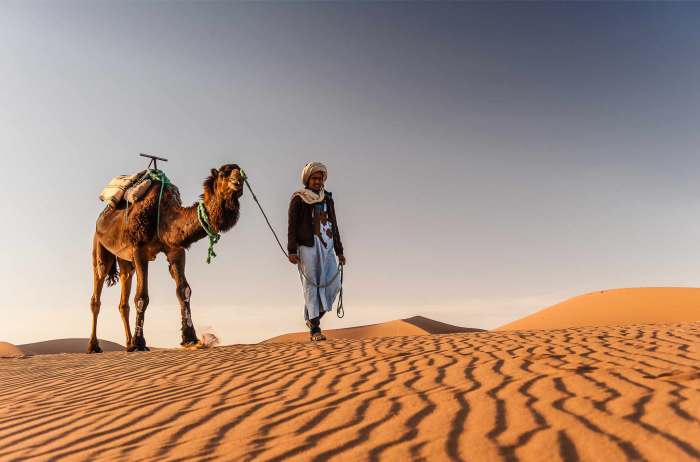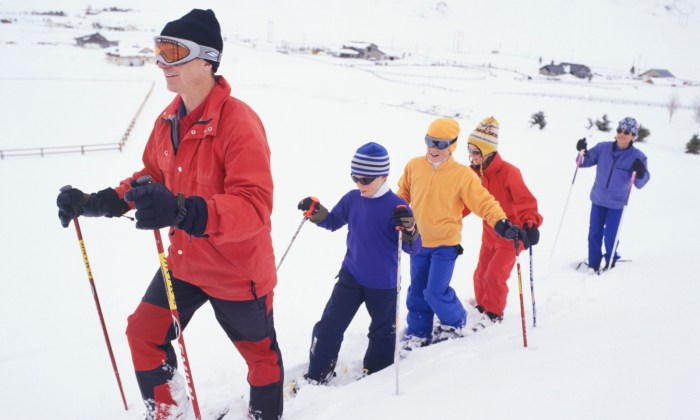
International Rock Climbing Expeditions take you on a thrilling journey to conquer towering cliffs and rugged terrains, offering a blend of adrenaline and awe-inspiring landscapes. From the challenging peaks of the Alps to the picturesque cliffs of Thailand, prepare to embark on the ultimate adventure of a lifetime.
Whether you’re a seasoned climber or a novice seeking a new challenge, these expeditions promise unforgettable experiences that test your limits and reward you with breathtaking views.
Introduction to International Rock Climbing Expeditions
International rock climbing expeditions involve traveling to different countries to explore and conquer challenging rock formations. These trips offer a unique opportunity for climbers to experience new cultures, landscapes, and climbing techniques.
Participating in international rock climbing expeditions can provide several benefits, including the chance to push your limits, improve your skills, and connect with fellow climbers from around the world. It also allows you to discover breathtaking natural sceneries and iconic climbing spots that are not available in your local area.
Popular Destinations for International Rock Climbing Expeditions
- Yosemite National Park, USA: Known for its granite cliffs and iconic routes like El Capitan, Yosemite offers a variety of climbing experiences for all skill levels.
- Chamonix, France: A mecca for alpine climbing, Chamonix boasts stunning mountain views and challenging routes in the French Alps.
- Kalymnos, Greece: Famous for its limestone cliffs and beautiful sea views, Kalymnos is a paradise for sport climbers looking for sunny crags.
- Paklenica National Park, Croatia: With its unique karst landscape and over 400 climbing routes, Paklenica is a hidden gem for adventurous climbers.
Planning and Preparation for International Rock Climbing Expeditions

Before embarking on an international rock climbing expedition, proper planning and preparation are essential to ensure a safe and enjoyable trip. This includes having the right gear and equipment, physical conditioning, and knowledge of local climbing regulations and safety protocols.
Essential Gear and Equipment
When preparing for an international rock climbing expedition, it is crucial to have the right gear and equipment. Some essential items include:
- Climbing shoes
- Harness
- Helmet
- Ropes
- Carabiners and quickdraws
- Chalk and chalk bag
- Belay device
- Climbing pack
Physical Training and Conditioning
Physical training and conditioning are key components of preparing for a rock climbing trip. Some tips to improve your climbing fitness include:
- Strength training for your upper body, core, and legs
- Cardiovascular exercises for endurance
- Flexibility training to prevent injuries
- Practice climbing techniques at a local gym or outdoor climbing area
Researching Local Regulations and Safety Protocols
Before heading to a new climbing destination, it is important to research and understand the local climbing regulations and safety protocols. This includes:
- Knowing the permitted climbing areas and routes
- Familiarizing yourself with any access restrictions or seasonal closures
- Understanding emergency procedures and rescue options in the area
- Following Leave No Trace principles to minimize environmental impact
Safety Measures and Risk Management in International Rock Climbing Expeditions

When embarking on international rock climbing expeditions, safety should always be the top priority. Proper precautions and risk management strategies can make all the difference in ensuring a successful and incident-free climb.
Pre-Expedition Safety Precautions
- Ensure all climbing gear is in good condition and properly fitted before the expedition.
- Research and understand the climbing route, terrain, and weather conditions to anticipate potential risks.
- Communicate your climbing plans and itinerary with a trusted contact who can raise the alarm if needed.
- Undergo proper physical training and conditioning to handle the demands of the climb.
Risk Assessment and Mitigation During Climbing
- Regularly assess the conditions and terrain while climbing, adjusting your approach accordingly.
- Stay alert for loose rocks, unstable surfaces, and changing weather patterns that could pose risks.
- Always use proper safety equipment like harnesses, helmets, and ropes, and double-check all connections.
- Have a clear communication system with your climbing partners to relay any potential dangers.
Handling Challenging Situations
- During a sudden storm, seek shelter in a safe spot and wait for the weather to improve before continuing.
- If someone in your group is injured, administer first aid immediately and, if necessary, call for emergency assistance.
- In case of getting lost, stay calm, retrace your steps to the last known point, and use navigational tools to find your way back.
- When facing extreme fatigue, know your limits, rest when needed, and consider turning back if conditions become too risky.
Environmental Impact and Conservation Efforts in Rock Climbing
Rock climbing, while exhilarating and rewarding, can have a significant impact on natural landscapes if not done responsibly. It is crucial for climbers to be aware of their environmental footprint and take steps to minimize any harm to the ecosystems they traverse.
Environmental Impact of Rock Climbing
Rock climbing can lead to soil erosion, damage to vegetation, and disruption of wildlife habitats. The use of chalk, bolts, and ropes can also leave behind visible marks on the rock surfaces, affecting the aesthetic appeal of the climbing areas.
Conservation Efforts in Rock Climbing, International Rock Climbing Expeditions
- Many climbing communities and organizations are actively involved in conservation initiatives to protect climbing areas and promote sustainable practices. These efforts include trail maintenance, waste management, and habitat restoration projects.
- Some climbing gyms and outdoor companies prioritize environmentally friendly practices, such as using eco-friendly gear and promoting Leave No Trace principles.
- Collaborations between climbers, land managers, and conservation groups have led to successful conservation projects aimed at preserving climbing areas for future generations.
Minimizing Environmental Footprint During Expeditions
- Choose established climbing routes to minimize environmental impact on fragile ecosystems.
- Practice Leave No Trace principles by packing out all trash, minimizing chalk use, and avoiding unnecessary bolt placements.
- Respect wildlife and vegetation by staying on designated trails and avoiding trampling on sensitive plant species.
- Participate in volunteer conservation projects to give back to the climbing community and help protect climbing areas.
Hiking and Trekking Mountain Adventures
Exploring mountainous regions through hiking and trekking offers unique experiences that cater to different preferences and skill levels. While both activities involve walking in nature, hiking typically refers to shorter, less strenuous walks on established trails, while trekking involves longer, more challenging journeys often in remote areas.
Differentiating Hiking and Trekking
- Hiking: Generally shorter, day trips on well-marked trails with moderate difficulty levels.
- Trekking: Involves multi-day expeditions, often in remote locations, with varying levels of difficulty and rugged terrain.
Popular Hiking and Trekking Destinations
- Mount Kilimanjaro, Tanzania: Known for its challenging trek to the highest peak in Africa.
- Appalachian Trail, USA: A famous hiking trail spanning over 2,000 miles through the eastern United States.
- Everest Base Camp Trek, Nepal: A classic trek that offers stunning views of the world’s highest mountain.
Personal Experiences in Challenging Adventures
During a trek in the Himalayas, I encountered unexpected weather changes and had to navigate through snow-covered trails. Despite the challenges, reaching the summit and witnessing the breathtaking views made the journey truly rewarding.
Safari and Wildlife Tours
When it comes to safari and wildlife tours, participants can expect a thrilling combination of adventure and close encounters with diverse wildlife species in their natural habitats. These tours offer a unique opportunity to witness majestic animals up close while exploring breathtaking landscapes.
Unique Safari Destinations
- Maasai Mara National Reserve, Kenya: Known for the annual wildebeest migration, Maasai Mara is home to a wide variety of wildlife, including lions, elephants, and cheetahs.
- Okavango Delta, Botswana: This UNESCO World Heritage Site is a haven for wildlife, with opportunities to see hippos, crocodiles, and a myriad of bird species.
- Serengeti National Park, Tanzania: Famous for its vast plains and abundant wildlife, Serengeti offers a chance to witness the Big Five – lions, elephants, buffalos, leopards, and rhinos.
Responsible Tourism Practices
- Choose eco-friendly lodges and tour operators that prioritize sustainability and conservation efforts to minimize the impact on the environment and wildlife.
- Follow the guidelines provided by experienced guides to ensure the safety of both visitors and animals during wildlife encounters.
- Respect the natural habitats of the animals by maintaining a safe distance and avoiding any disruptive behavior that could distress or harm the wildlife.
Extreme Sports Travel
Extreme sports are adrenaline-pumping activities that appeal to thrill-seekers and adventure enthusiasts looking for a rush of excitement and challenge. These sports often involve high levels of physical exertion, danger, and risk, making them popular among adrenaline junkies.
Top Extreme Sports Destinations
- Queenstown, New Zealand: Known as the adventure capital of the world, Queenstown offers bungee jumping, skydiving, jet boating, and more.
- Interlaken, Switzerland: Nestled in the Swiss Alps, Interlaken is a paradise for extreme sports lovers, with activities like paragliding, canyoning, and skydiving.
- Moab, Utah, USA: Moab is a mecca for rock climbing, mountain biking, and BASE jumping, set against the stunning red rock landscapes of Utah.
Safety Measures for Extreme Sports Travel
Participating in extreme sports while traveling requires careful consideration of safety measures and precautions to minimize risks and ensure a safe and enjoyable experience. Some essential safety tips include:
- Always wear appropriate safety gear, such as helmets, harnesses, and protective padding.
- Follow instructions from experienced guides and instructors to ensure proper technique and equipment use.
- Understand the risks involved in each activity and assess your own skill level before participating.
- Check the weather conditions and be prepared for any changes that may affect your safety during the activity.
- Listen to your body and know your limits to avoid pushing yourself beyond what you can handle.
Scuba Diving Destinations
Exploring the underwater world through scuba diving is a thrilling experience that opens up a whole new realm of marine life and ecosystems. From vibrant coral reefs to mysterious shipwrecks, scuba diving destinations offer an unparalleled adventure for divers of all levels.
Popular Scuba Diving Destinations
- The Great Barrier Reef, Australia: Known for its stunning coral formations and diverse marine life, this UNESCO World Heritage site is a must-visit for any scuba diver.
- Galapagos Islands, Ecuador: Famous for encounters with hammerhead sharks, marine iguanas, and sea lions, the Galapagos Islands offer unique and unforgettable diving experiences.
- Belize Barrier Reef, Belize: Home to the famous Blue Hole, this destination is perfect for advanced divers looking to explore deep underwater caves and walls.
- Maldives: With crystal-clear waters and abundant marine biodiversity, the Maldives is a paradise for both beginner and experienced divers.
Tips for Scuba Divers
- Get certified: Before embarking on any scuba diving adventure, ensure you are properly certified and trained to dive safely.
- Research dive sites: Familiarize yourself with the dive sites, currents, and marine life of the destination to make the most of your diving experience.
- Stay calm and breathe: Remember to stay calm underwater, breathe slowly and deeply, and always communicate with your dive buddy.
- Practice good buoyancy control: Mastering buoyancy control is essential for conserving energy, protecting marine life, and enhancing your overall diving experience.
Adventure Travel Blogs
Adventure travel blogs play a crucial role in inspiring and informing travelers about unique and thrilling experiences around the world. These blogs provide valuable insights, tips, and personal stories that can help individuals plan their own adventurous trips and explore new destinations. Whether it’s rock climbing in remote locations, trekking through rugged landscapes, or diving into the depths of the ocean, adventure travel blogs offer a wealth of information and inspiration to all adventure enthusiasts.
Popular Adventure Travel Bloggers and Their Unique Perspectives
Adventure travel bloggers come from diverse backgrounds and have unique perspectives on exploring the world. Some popular adventure travel bloggers include:
Alex in Wanderland
Known for her vibrant storytelling and stunning photography, Alex shares her adventures from around the globe, including scuba diving, hiking, and cultural experiences.
The Expert Vagabond
Matt’s blog focuses on extreme adventures, off-the-beaten-path destinations, and adrenaline-pumping activities like skydiving and bungee jumping.
Adventurous Kate
Kate’s blog highlights solo female travel adventures, outdoor activities, and immersive cultural experiences, inspiring women to explore the world fearlessly.These bloggers offer a mix of practical advice, personal anecdotes, and breathtaking visuals that captivate readers and encourage them to step out of their comfort zones and embrace the thrill of adventure.
Tips for Starting an Adventure Travel Blog and Building a Community Around It
Starting an adventure travel blog requires passion, dedication, and a unique voice that sets you apart from the crowd. Here are some tips for aspiring adventure travel bloggers:
Define your niche
Focus on a specific type of adventure travel or a particular region to attract a targeted audience.
Create engaging content
Share captivating stories, stunning photos, and practical tips that resonate with your readers and inspire them to embark on their own adventures.
Network with other bloggers
Collaborate with fellow adventure travel bloggers, participate in online communities, and attend travel conferences to expand your reach and build a supportive network.
Engage with your audience
Respond to comments, ask for feedback, and create interactive content that encourages reader participation and fosters a sense of community.By following these tips and staying true to your passion for adventure travel, you can create a successful blog that inspires, informs, and connects with like-minded travelers from around the world.
Beaten Path Adventures
Exploring off-the-beaten-path destinations can lead to unforgettable travel experiences filled with authenticity and unique discoveries. These hidden gems offer a chance to connect with nature, culture, and local communities in ways that popular tourist spots often cannot provide.
Benefits of Off-the-Beaten-Path Travel
- Immersive Cultural Experiences: Visiting lesser-known destinations allows travelers to interact more intimately with locals, learn about their traditions, and gain a deeper understanding of their way of life.
- Escape the Crowds: Off-the-beaten-path locations offer a peaceful retreat from the hustle and bustle of tourist-heavy areas, providing a sense of tranquility and solitude.
- Unique Discoveries: Exploring hidden spots can lead to unexpected encounters with breathtaking landscapes, rare wildlife, and intriguing historical sites that are off the radar of mainstream tourism.
Challenges of Off-the-Beaten-Path Travel
- Limited Infrastructure: Some remote destinations may lack proper transportation, accommodation, or amenities, making logistics more challenging for travelers.
- Language Barriers: In less touristy areas, English may not be widely spoken, requiring visitors to navigate communication barriers and potentially rely on local phrases or interpreters.
- Safety Concerns: Venturing into uncharted territory can pose risks such as unfamiliar terrain, wildlife encounters, or lack of emergency services, necessitating extra caution and preparedness.
Winter Sports Travel
Winter sports are a thrilling way to embrace the cold weather and enjoy the snowy landscapes. Activities like skiing, snowboarding, and ice climbing offer a unique and exciting experience for adventure seekers. When planning a winter sports adventure, it is essential to consider safety precautions to stay protected in cold environments.
Popular Winter Sports Destinations
- Switzerland: Known for its picturesque Alps and world-class ski resorts like Zermatt and St. Moritz.
- Canada: Offers a variety of winter sports activities in destinations such as Whistler, Banff, and Lake Louise.
- Japan: Famous for its deep powder snow and ski resorts in Hokkaido and Nagano.
Tips for Planning a Winter Sports Adventure
- Check weather conditions and avalanche risks before heading out.
- Invest in proper gear and clothing to stay warm and dry.
- Book accommodations in advance, especially during peak seasons.
- Take lessons or hire a guide if you are new to a particular winter sport.
Staying Safe in Cold Environments
- Dress in layers to regulate body temperature and protect against frostbite.
- Stay hydrated and nourished to maintain energy levels in the cold.
- Be aware of signs of hypothermia and frostbite, and seek help immediately if needed.
- Inform someone of your itinerary and expected return time when venturing into remote areas.
Desert Expeditions
Desert expeditions hold a unique allure for adventurous travelers seeking to explore the vast and breathtaking landscapes of arid environments. The challenges they present, from extreme temperatures to rugged terrain, make them an exciting and rewarding experience for those willing to venture into the unknown.
Famous Desert Destinations
- Explore the mesmerizing Sahara Desert in Africa, known for its endless sand dunes and stunning oases.
- Discover the mystical beauty of the Arabian Desert, home to iconic landmarks like the Rub’ al Khali (Empty Quarter).
- Embark on a journey to the diverse Gobi Desert in Asia, where rugged mountains and vast steppes create a unique desert landscape.
- Experience the otherworldly Atacama Desert in South America, famous for its lunar-like landscapes and geothermal wonders.
Preparing for Desert Expeditions
- Stay hydrated: Carry an ample supply of water and electrolyte-rich drinks to combat dehydration in the arid climate.
- Protect yourself from the sun: Wear lightweight, breathable clothing, a wide-brimmed hat, and sunscreen to shield against intense sun exposure.
- Navigation essentials: Bring a map, compass, and GPS device to navigate the vast desert terrain and avoid getting lost.
- Emergency supplies: Pack a first aid kit, signaling devices, and extra food and water in case of unforeseen circumstances.
As you reflect on the exhilarating escapades of International Rock Climbing Expeditions, you’ll cherish the memories of scaling majestic heights and pushing your boundaries. Embrace the thrill of the climb and the beauty of nature, knowing that each expedition leaves an indelible mark on your soul.
Clarifying Questions
What should I pack for an International Rock Climbing Expedition?
Essential items include climbing shoes, harness, helmet, ropes, carabiners, and quickdraws. It’s crucial to have durable clothing, plenty of water, snacks, and a first aid kit.
How do I train for an International Rock Climbing Expedition?
Focus on building strength, flexibility, and endurance through regular climbing sessions, cardio exercises, and strength training. Practice climbing techniques and improve your stamina to prepare for the challenges ahead.
Are there age restrictions for participating in International Rock Climbing Expeditions?
While age requirements can vary depending on the expedition and location, most trips require participants to be at least 18 years old. Some expeditions may have specific age limits due to the difficulty level.
What safety measures are in place during International Rock Climbing Expeditions?
Experienced guides lead the expeditions, ensuring proper safety protocols are followed. Climbers are briefed on emergency procedures, and equipment is regularly inspected to maintain safety standards.
How can I reduce my environmental impact during International Rock Climbing Expeditions?
Respect nature by staying on designated trails, properly disposing of waste, and avoiding damage to vegetation. Support local conservation efforts and leave no trace behind to preserve the natural beauty of climbing destinations.





